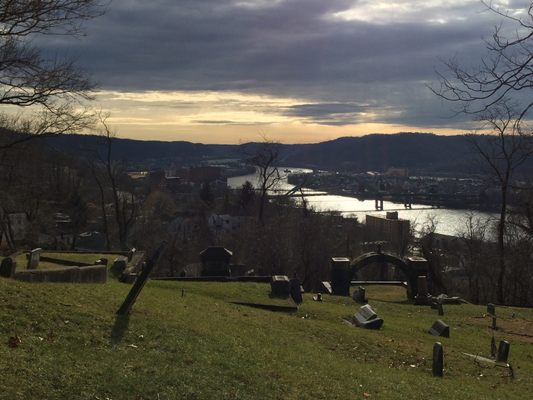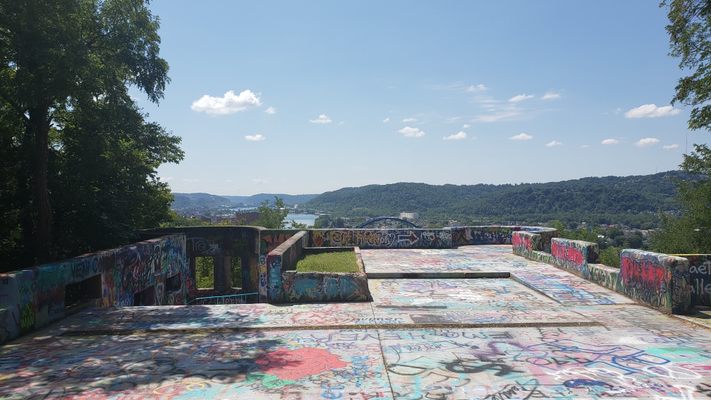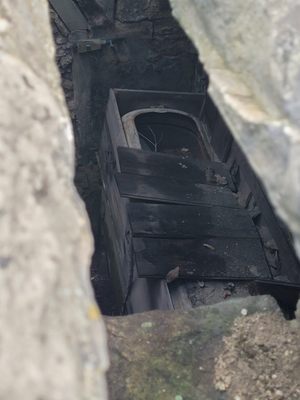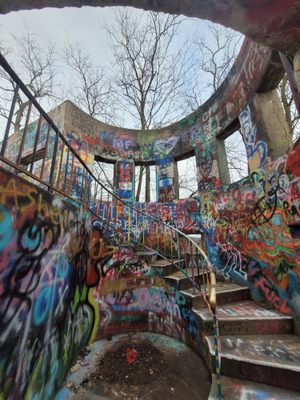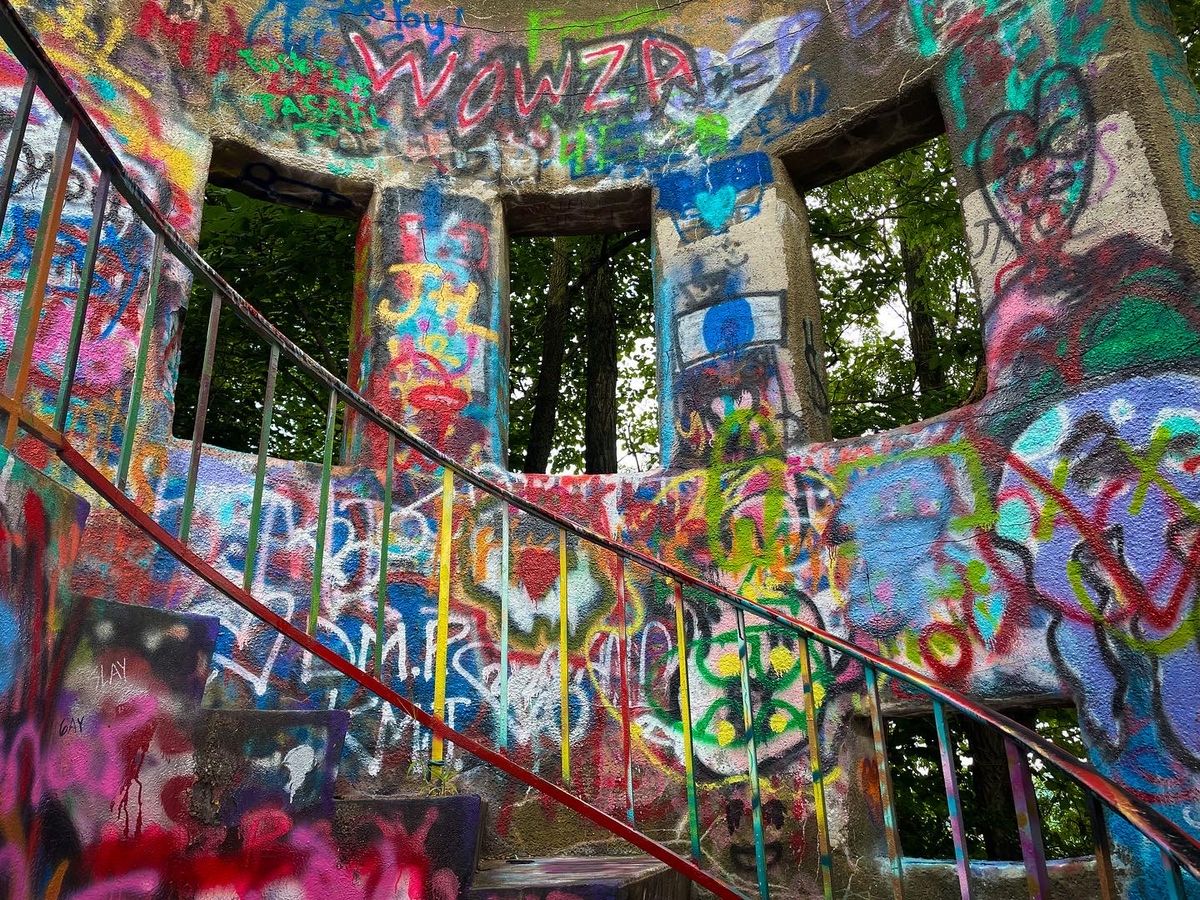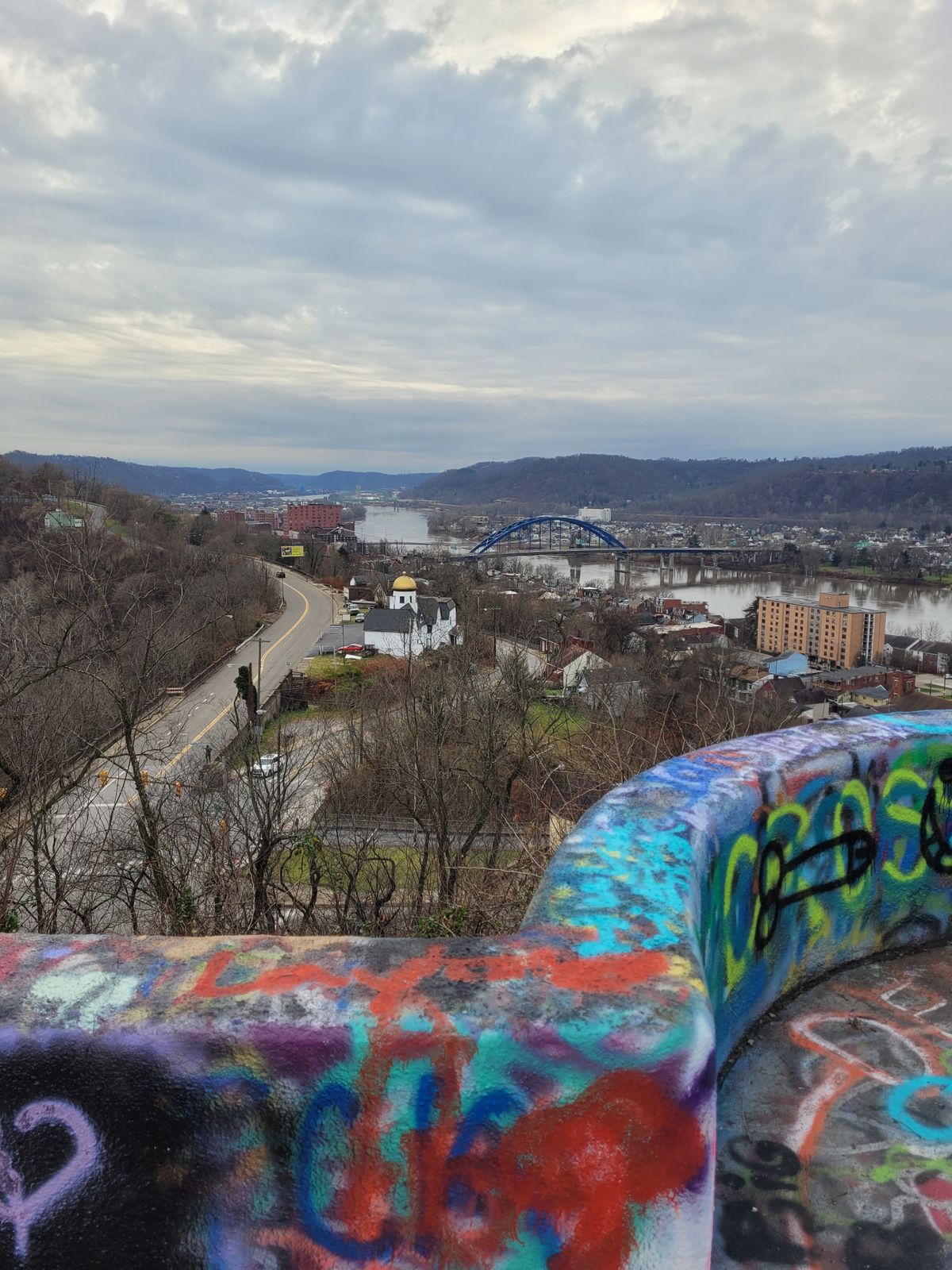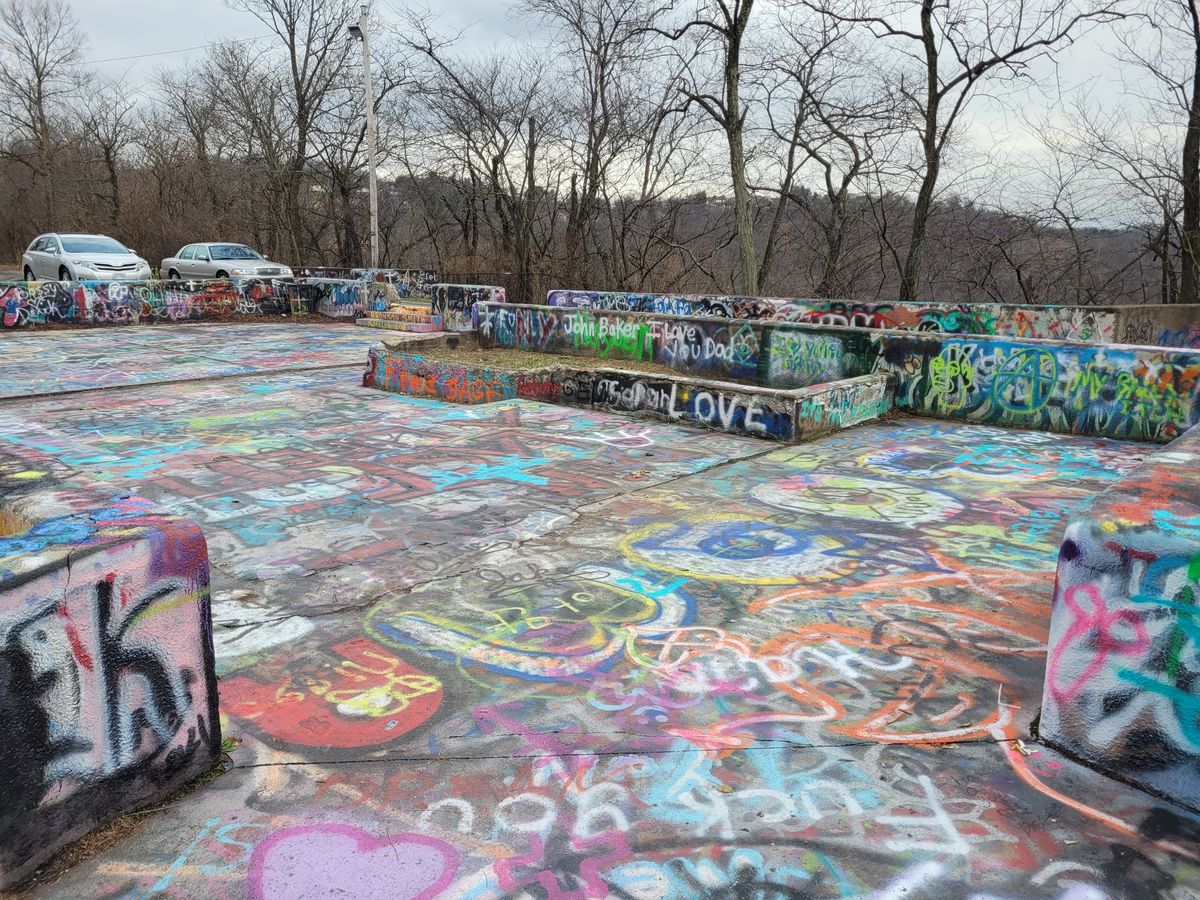About
The city of Wheeling, West Virginia is steeped in a mythology of excess in decline. Once home to more millionaires per capita than anywhere else in the country, populated with gangsters and tycoons, skimming off shipping along the Ohio when industry was rich, recent decades have dealt the city a hand equal to that of its Rust Belt brethren. This means that teasing out fact from fiction can, at times, be a tricky proposition. Such is the case with the Mount Hood Overlook, often referred to by locals as "the Castle."
Popular legend says that an unknown soul abandoned the magnificent dream structure when his lady love unexpectedly perished. After some digging, however, local historians established that at least some of these aspects were true. In 1925, this property actually belonged to a local doctor who set out to build this dream home as a gift to his wife. Naturally, it would have a rounded, turret-like architectural feature with windows looking out on the best view of the city; the remnants of this, including its spiral staircase, and a second story form the entirety of the Mount Wood Overlook we know today. Unfortunately, the enterprising man in question was hauled off on federal drug trafficking charges before the structure was completed, and the property was "donated" (read: returned) to the City of Wheeling, which has retained control ever since.
With languishing funds in all its coffers, the space has declined over the years and is nearly unrecognizable from the top. Only those curious enough to walk down its staircase and look up from the brush will see the potential of what it could have been.
Among those who recognize its potential are those on the Wheeling Arts Commission, which has established a mission to reclaim the Castle from vandals. Through a project of "Guerrilla Gardening," started in the summer of 2015, volunteers applied a natural slurry to grow moss in artistic patterns on top of the existing spray paint, which they see as an eyesore encouraging further blight upon the city.
Across the road from the Castle is the Mount Wood Cemetery, which holds many old graves and mausoleums from many of Wheeling's first residents. With grave markers dating back to the 1700s, many are so old and weatherbeaten that the inscriptions of their names and dates are illegible. Making use of the steep hillsides are dozens of sepulchers built directly into the earth. As with many of the mausoleums which contain remains of the early city's most important families, the doors and windows have long since gone missing, only to be cemented closed by modern masons or padlocked shut to prevent further damage. Despite this, these limestone, brick, and marble structures and their cast iron trimmings retain a sort of sad beauty.
Despite its picturesque location, a potent mixture of time, neglect, and vandalism have resulted in many of toppled obelisks and tombstones snapped off at the ground. Some gravestones have been paved over with asphalt to create the walking path through the cemetery. Nonetheless, the grounds provide a haunting-yet-fascinating glimpse into the former grandeur of Wheeling's citizens in the face of America's blue-collar economic downturn, all while standing in the very same spot that inspired the city's founders in 1769 to attempt to "tame" the landscape in the first place.
Related Tags
Know Before You Go
North of Wheeling, follow the National Road east and take a left onto Mt Wood Road. The cemetery will appear shortly on the left, and the overlook will be across on the right where parking is available.
Community Contributors
Added By
Published
December 2, 2015







